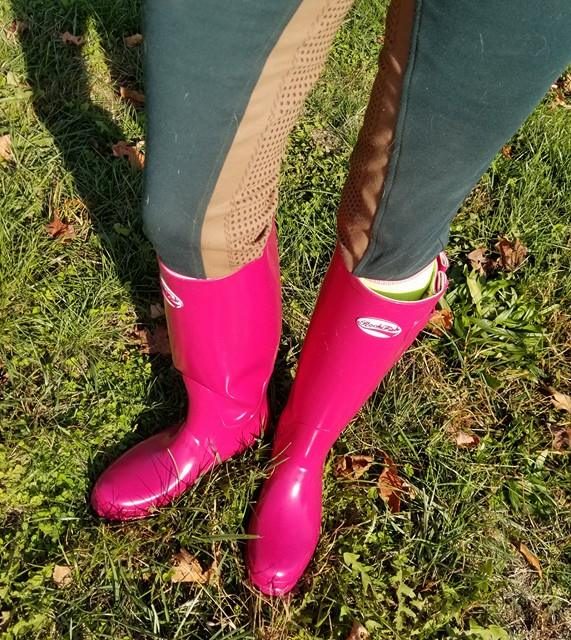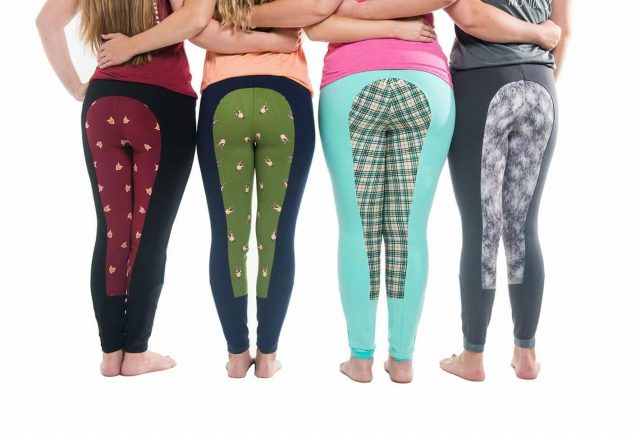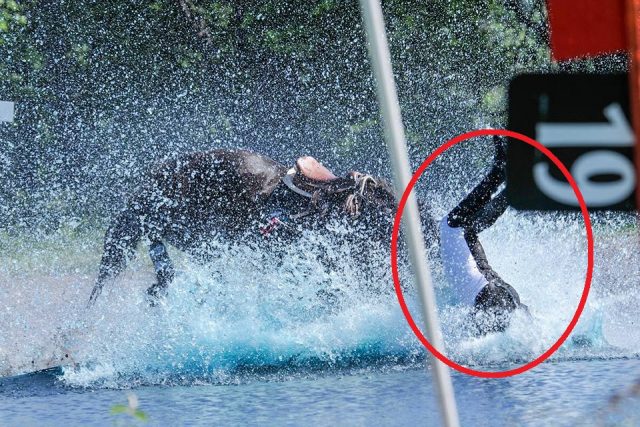
Retired Racehorse Project Thoroughbred Makeover
On Friday, Feb. 2, 2018, the internet was on fire with celebratory posts like “I got in! I’m accepted into the Retired Racehorse Project Thoroughbred Makeover 2018!” In fact, 794 trainers likely made such an announcement, and 231 of them declared Eventing as their primary discipline. But now that it’s Monday, the work week has begun, and the reality has set in, perhaps the question many are asking is, “Now what?”
Here’s some helpful advice for competitors doing the Makeover! As a competitor myself in 2015 and 2016, I can promise the range of emotions you will feel during the process are completely normal, and that everyone else feels the same way.
You’ll experience excitement when you realize you’re among an elite group of trainers, amateurs and youth from around North America (and the world!) who love OTTBs as much as you do.
You’ll have joy when your project trots that first ground pole, handles that first trail ride like a champ, or accepts the bit and your leg for the first time, when if you squint it almost looks like he’s thinking about a dressage frame (almost).
You’ll feel frustration when he gets the inevitable pasture injury. Or even devastation when he passes away suddenly due to colic at only 5 years old.
There’s an amazing support group of riders just like you, going through the same happiness and struggles, who are there for you. Many have experience with feeding (weight building) and care of OTTBs, dealing with injuries, and retraining a thoroughbred brain. Reach out to them.

Amy Nelson’s 2015 mount “River Clam” — Purchase Day on 10/2013 (top) to current 12/2017 (bottom).
EN spoke to Erin Harty from the Retired Racehorse Project, and we asked:
What are the top three things you want competitors to do leading up to the Makeover?
1. “Be an informed competitor. First and foremost, read the rules. Read the rules. READ THE RULES. (Seriously, can’t emphasize this enough.) Just about every question a competitor could have is covered in there. Also, read the emails RRP sends you. The competition at the Thoroughbred Makeover is not structured the same as a regular horse trial and while we go to great pains to explain everything to our competitors, we can’t help you if you don’t read the emails!”
2. “Seek out help — both in retraining your OTTB and with the specifics of the competition. It’s permitted in the rules for someone else to be the primary rider on your horse before July 30, so if you want to have a professional do the first few months of post-track training, you can. You should have an OTTB-knowledgeable professional trainer helping you, at least occasionally, regardless of your level of experience — we all need eyes on the ground! The Makeover also comes with a built-in support system of fellow trainers, many of whom have decades of experience in restarting thoroughbreds, and they’re more than happy to offer advice through our trainers-only Facebook group. The camaraderie among the trainers is one of the best aspects of the Makeover, so take advantage of it!”
3. “Market your own OTTB, and OTTBs in general. Although everyone has their own competitive goals, the primary goal of the Makeover is to increase nationwide demand for off-track Thoroughbreds, and our Makeover trainers play a huge role in doing that. The Makeover offers a great opportunity for your friends, family, barnmates, etc., to follow along as these horses start their journeys into second careers.”
“The more we talk about how talented our OTTBs are, how quickly they learn, and how versatile they can be, the more we elevate the status of OTTBs as a whole. We encourage all trainers to start a Facebook page for their own Makeover mount where they can post photos, videos and updates. For horses that are for sale, this is doubly important. The Makeover is an amazing opportunity to get your OTTB resale project in front of a huge audience of interested buyers. Invest the time in taking good photos and videos and writing a great sale listing for your horse.
“It’s also important not to get Makeover tunnel vision — this is just the start of your horse’s new career, it’s not the end goal. Put your horse first. Even if you don’t make it to the competition, you’re helping to get more of these amazing horses into new jobs.”

Amy Nelson and 2015 mount “River Clam” (Hummingbird’s River) at the Makeover Oct 2015 (left), Training Level Eventing at Hagyard Midsouth Three-Day Event Oct 2017 (right).
To me, as a previous competitor, the most important thing to remember is that it’s a JOURNEY, not a destination. The RRP Thoroughbred Makeover will take place October 4-7, 2018 at the Kentucky Horse Park in Lexington, Kentucky. Your eager mount will step onto the same course where four-star eventers and grand prix show jumpers have competed. They walk their course in this arena just like you will … with nervous excitement … as the world watches. But after the Makeover is done, and you head back home with your OTTB (or he goes home with a new, loving family), the real fun begins!

Amy Nelson and 2015 mount “River Clam” (Hummingbird’s River). Photo courtesy of Amy Nelson.
My 2015 mount River Clam (we show him under Hummingbird’s River) will aim to go Prelim this year, with a one-star on the horizon. It was amazing the emotions that hit me in October 2017, when on the two-year anniversary of his RRP Thoroughbred Makeover Competition, he was competing in Training Level at the Hagyard Midsouth Team Competition & Three-Day Event. Photos kept showing up on my social media history as a reminder of how far we’ve come.
This was a horse who finished in the top 2/3 of Eventers (read: 40th place out of maybe 60) … whom judges described as “very green,” “a little too keen,” and “very, VERY bold.” Don’t get me wrong, the judges were absolutely spot on. It’s taken a few years to direct this gangly grey dinosaur’s enthusiasm.

Amy Nelson and 2015 mount “River Clam” January 2015 (left), October 2017 (right).
But as you mount up this week for the first ride on your green OTTB, or even start shopping for a Makeover horse, remember: you’re not alone. Retraining takes time. And as my trainer always told me, “Horses work on horse time. Not human time.”
3…2…1…have a great ride.
This article is dedicated to our 2016 mount Joegun (barn name Six) who was taken too soon by colic after the Makeover, and to all the others we have loved and lost.

















































 **Keep in mind, these breeches run a little large. Generally order one size smaller than normal will do the trick, but they do have a handy sizing chart to help.**
**Keep in mind, these breeches run a little large. Generally order one size smaller than normal will do the trick, but they do have a handy sizing chart to help.**








































